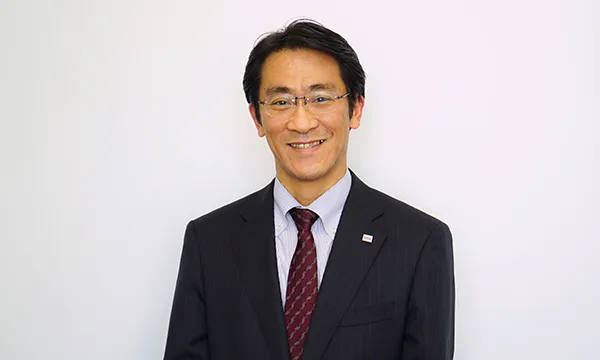
Toshiba ESS steps up digital game in energy domain
Digital technology and data analytics take a whole new spin in the utilities space.
When power demand surged after Tokyo experienced heavy snowfall in January, Tokyo Electric Power Company (TEPCO) decided to request for negawatt for the first time. Toshiba Energy Systems & Solutions Corporation (Toshiba ESS) provided it, mediating between the TEPCO and commercial scale utility customers.
According to Takashi Sasaki, Chief Technology Executive of Toshiba ESS, the company’s substantial advantage in supply demand control system is a major element that differentiates them in the energy management area. Japan’s lowest power outage rate in the world is owed to the sustained effort of utilities in Japan, and Toshiba has long supported them with its equipment and systems. In fact, 70% of power system control centres in Japan is delivered by Toshiba.
Toshiba ESS and Japan’s Tohoku Electric Power Co., Inc. announced a collaborative digital effort last year with an ambitious goal to analyse operational data for the prediction of anomalies and potential troubles in thermal generating equipment. Developments in IoT solutions and big data analytics have made the initiative possible, further allowing the analysis and improvement of heat efficiency once the system will be installed in 2019.
Sasaki said that Toshiba offers its digital solutions to utilities as a way to make savings by helping them better maintain equipment, increase production, avoid outages, and manage assets and control the grid more effectively. In this way, utilities can operate more efficiently and be more eco-friendly.
Furthermore, Toshiba ESS’s solutions provide utilities with means to accelerate the management of renewables flowing into the grid, joining the concerted effort to decarbonise the energy system. Sasaki said that whilst renewables are clean, they cause output fluctuations and thereby require smarter adjustments to balance the grid.
SPINEXTM: Toshiba’s digital architecture
The backbone of Toshiba ESS’ digital solutions is SPINEXTM, Toshiba’s digital architecture that is used throughout Toshiba group. SPINEXTM features three key technologies: edge computing, digital twin, and media intelligence. With the company’s co-creation approach and digital solutions suite, power utilities will be in superior control over their own processes.
Edge computing reduces latency in response by collecting and analysing data near the source, thereby enabling distributed processing. Meanwhile, its digital twin technology enables accurate prediction and simulation of things using real time data. With a digital twin, real products can now avoid failures and further improve their performance.
“Our deep knowledge and accumulated know-how of the hardware allows us to build very precise digital twins and make accurate simulations. We are the one who knows best how to enhance generation efficiency. Companies with both hardware and software would have an edge in digitalisation,” Sasaki said.
Lastly, SPINEXTM’s media intelligence technology integrates speech and image recognition technology with advanced AI to understand human intentions and support human activities. For instance, it helps to make inspection work more efficient. It understands the spoken words of field service personnel and makes a report. It analyses the images of power lines collected by drones and detects if there is anything wrong with them.
Digital milestones
From making and transmitting energy to storing it, Toshiba ESS has rolled out digital solution after digital solution. In July 2017, the company embarked on a partnership with the Sem-Calaca Power Corporation (SCPC) to investigate the deployment of total asset management including plant optimisation, predictive monitoring with IoT solutions to detect emerging problems and extend the operating life of the company’s four-unit, 900MW Calaca Thermal Power Plant in Luzon, Philippines.
According to Sasaki, this partnership with SCPC is expected to win life-cycle cost savings for the plant by reducing unexpected outage, and to achieve optimised, comprehensive and efficient operation and maintenance management.
AI also plays a huge role in Toshiba ESS’s transmission and distribution efforts. The company has developed a power demand forecast system that uses sparse-modelling technology realising efficient machine learning to determine the correlation of weather information and actual power demand. It earned top prize for forecasting accuracy in TEPCO’s international contest to find the best formula for forecasting electricity load.
In the area of smart grid, Toshiba ESS set up a division that promotes energy aggregation business in January 2018. Increasing adoption of renewable energy is expected to spur demand for aggregating services, integrating and adjusting the balance of supply from distributed energy resources and storage and demand.
This new division’s activity is backed up by the company’s experience and know-how of renewables and the network control technology supporting them. The experiences include smart grid demonstration projects of large cities such as Yokohama and New Mexico and also of small islands in Okinawa, which gave the company many findings and insights. Such trials and efforts have been made from a decade ago.
“We expect to see more and more new aggregators coming into the grid. The grid would require a player that can watch and simulate the grid all the time and control the resources if there are any signs of overload or voltage instability. Toshiba ESS is well positioned to be such a player with its expertise in power grid system technology, together with the advanced digital technologies in the group,” Sasaki added.








![Cross Domain [Manu + SBR + ABF + ABR + FMCG + HBR + ]](https://cmg-qa.s3.ap-southeast-1.amazonaws.com/s3fs-public/styles/exclusive_featured_article/public/2025-01/earth-3537401_1920_4.jpg.webp?itok=WaRpTJwE)
![Cross Domain [SBR + ABR]](https://cmg-qa.s3.ap-southeast-1.amazonaws.com/s3fs-public/styles/exclusive_featured_article/public/2025-01/pexels-jahoo-867092-2_1.jpg.webp?itok=o7MUL1oO)









 Advertise
Advertise


